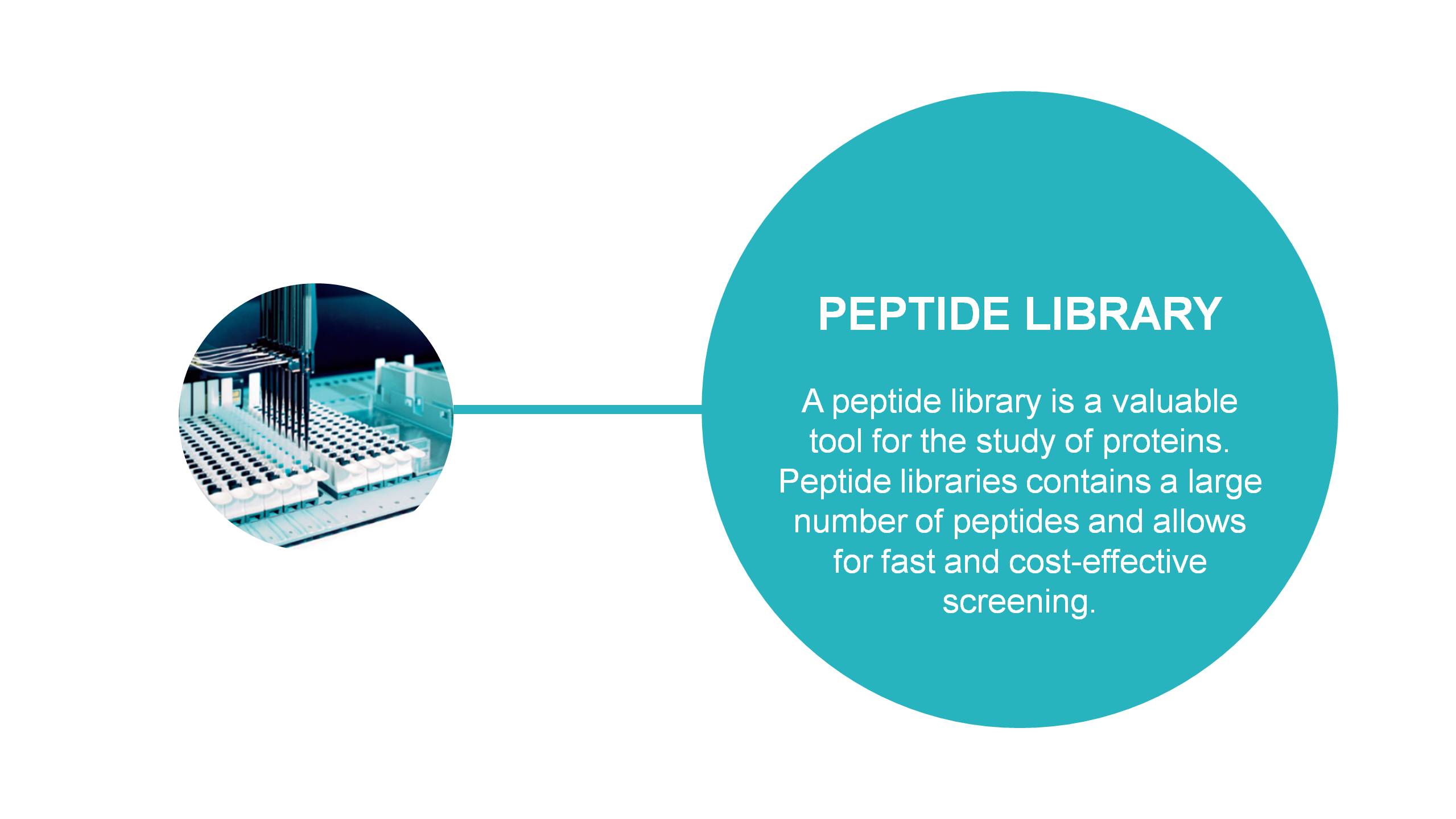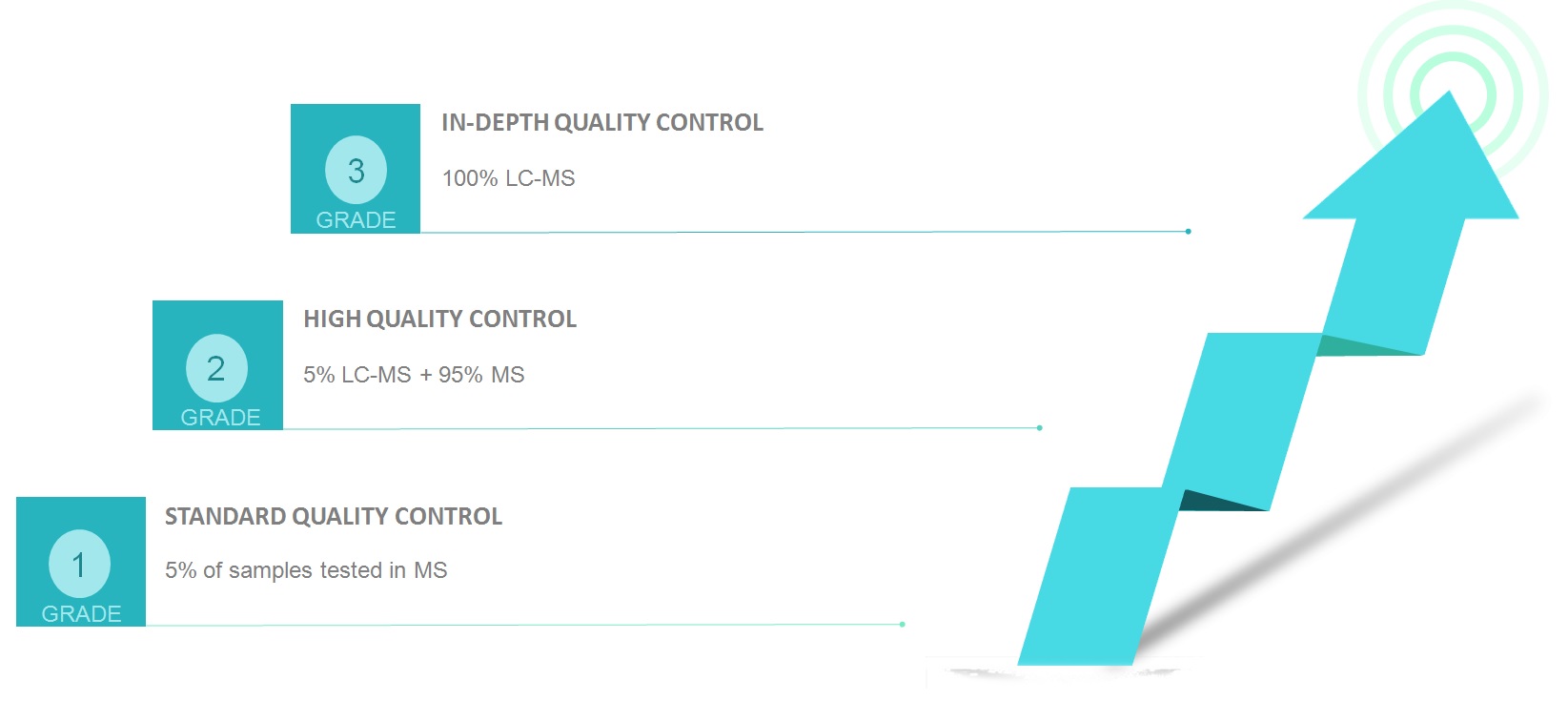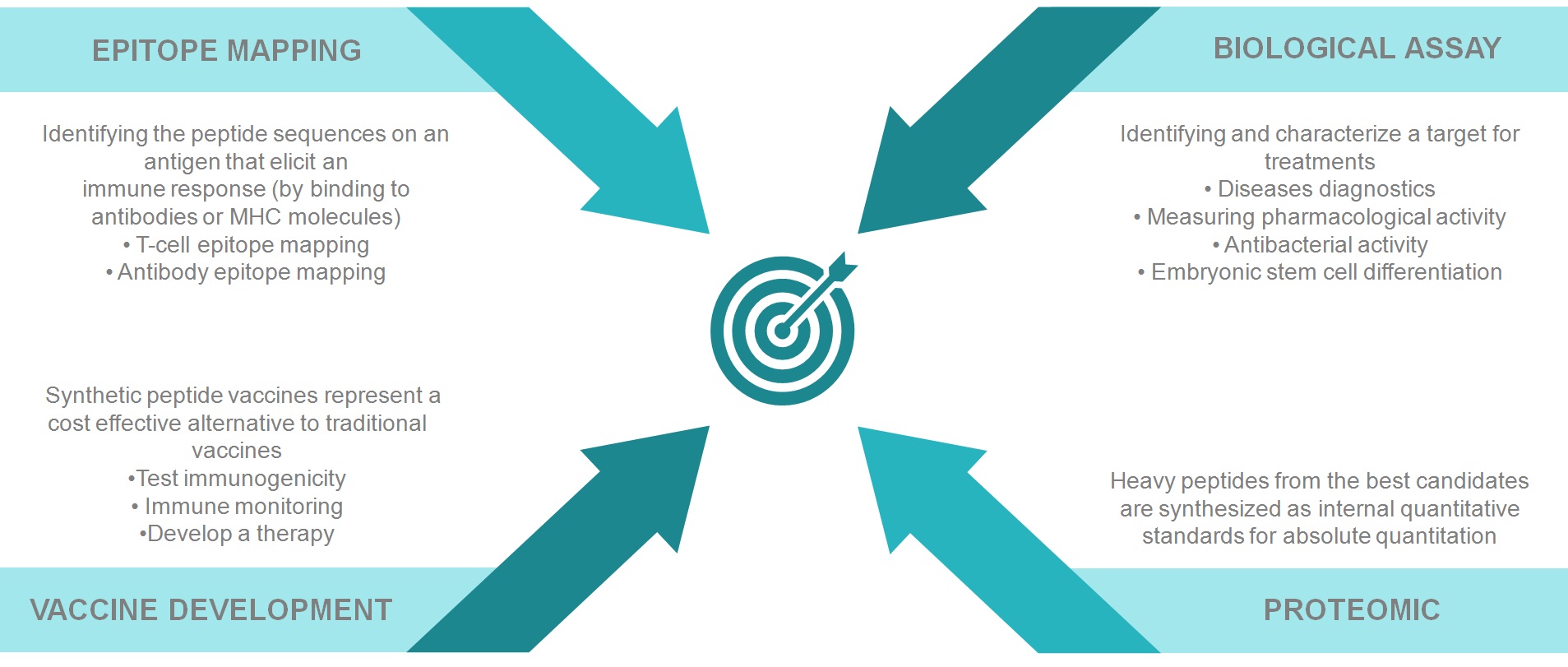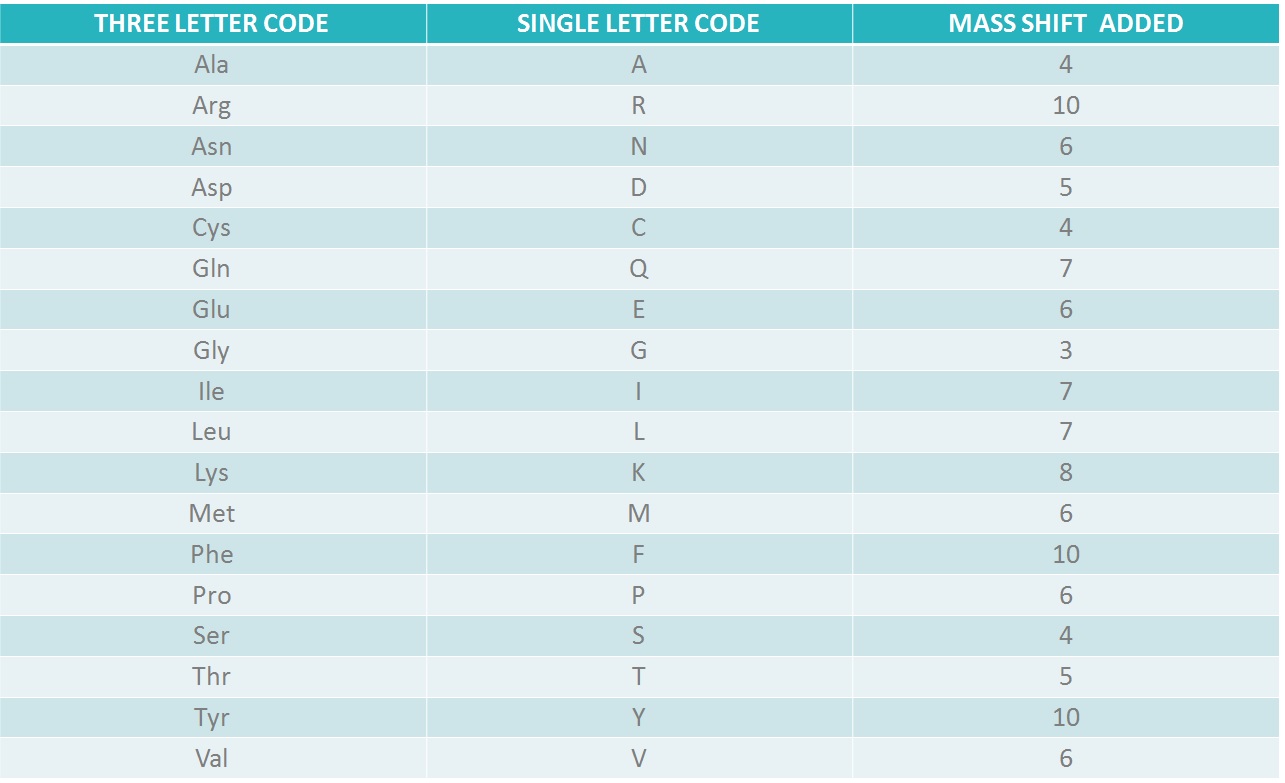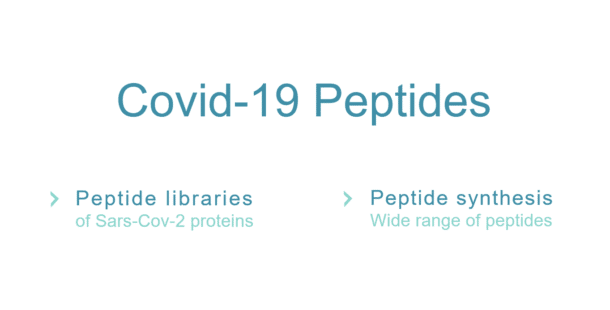Peptide Library Synthesis
Peptide library synthesis service aims synthesizing hundreds of peptides in small quantities. Peptide library synthesis is useful in many applications, such as epitope mapping, immuno-oncology, vaccine development, immunomonitoring… But also in quantitative proteomics, structure-activity relationship studies…
For example, you might be interested in our SARS-CoV-2 peptide libraries.
SB-PEPTIDE synthesizes peptides 96 per 96 in parallel whom can be delivered in various formats (96 well plates or microtubes).
Peptides are delivered in various scales from 2µmol to 7µmol per peptide.
|
|
Amount : 2 to 7 µmol, purity crude (average purity 60-70% for 10-15aa) |
| |
Deliverable format : |
| – Lyophilized or in solution | |
| – Individual microtubes or 96 wells plate | |
| |
Peptide design : C-ter amidation by default (C-ter carboxylation upon request) |
| |
Turnaround time : 2-3 weeks |
| Price : Ask for your quote | |
| |
Options : TFA removal, plate replication, purification, other upon request |
Peptide library synthesis – Quality control grades
SB-PEPTIDE offers different grades of quality controls. Indeed possible quality controls are MS (mass spectrometry) to verify the presence of the expected sequence and LC-MS (liquid chromatography coupled to mass spectrometry). In addition to verify the presence of a peptide, LC-MS allows to determine the purity rate of the expected peptide.
As quality control requierements on peptide libraries can differ depending on applications, SB-PEPTIDE offers three quality control levels.
Peptide library synthesis – Modifications
SB-PEPTIDE libraries also offers a wide range of modifications such as the incorporation non-natural amino acids, to restrict conformation by CLIPS technologies or disulfide bridges. Moreover, SB-PEPTIDE offers to add groups such as Biotin or fluorescent dyes (FAM, TAMRA, ..) and many others. We also offer heavy isotope labeling, so heavy peptides can be used for biomarker identification and quantification for instance.
In conclusion several modifications are available depending on your specific demands:
– Phosphorylation (phosphorylated Serine, Threonine and Tyrosine)
– Biotinylation
– Isotope labeling for heavy peptides
– Addition of non-natural amino acids
Others described below.
| wdt_ID | MODIFICATIONS | MODIFICATIONS |
|---|---|---|
| 1 | Peptide cyclization, Disulfide bridges | Phosphorylation (pSer,pTyr,pThr) |
| 2 | Isotope labeling (L,R, ..) | Non natural AA (met[O], cysteine CAM, ..) |
| 3 | Fluorescent dye (FAM, TAMRA, ..) | FRET |
| 4 | Biotinylation (N-ter, C-ter) | CLICK chemistry functionalization |
| 5 | Maleimide | N-ter acetylation, C-ter amidation |
SB-PEPTIDE’s exclusive benefits
In-silico pre-selection
The general rule in peptide synthesis is that the longest a sequence is, the lower the purity rate will be. Synthesis of a standard 10 amino acids peptide gave generally around 70% of purity rate. A 40 amino acid peptide will generally give a 30% purity rate. This is highly variable depending on amino acid composition and their positions. Knowing this, to maximize quality of syntheses, SB-PEPTIDE has developed a proprietary predictive tool to screen and select the easiest sequences to be synthesized. Thus, SB-PEPTIDE can select from a client’s sequence-list peptides that should give best purity rate in synthesis.
Advantageous conditions for hit peptides
In case some peptides from a peptide library give good results and larger amount are needed, SB-PEPTIDE ensure a special discount on its individual peptide synthesis service to obtain milligrams to grams quantities.
Plate replication
SB-PEPTIDE can also synthesize your master plate and distribute the peptides in different plates so that you can store your product and use it when you need it.
Sample mixing
In order to build up your peptide libraries as well as possible, we can synthesize your plate(s) and gather the peptides in the same well. This action can be done manually or with the help of robot pipettors.
Applications of peptide libraries
SB-PEPTIDE libraries contains a large number of peptides and are used in many areas, such as biological assays and epitope mapping. But also in T-cell immunotherapy, immune monitoring, vaccine development and proteomics.
Illustration of possible peptide library designs
ALANINE SCANNING PEPTIDE LIBRARY
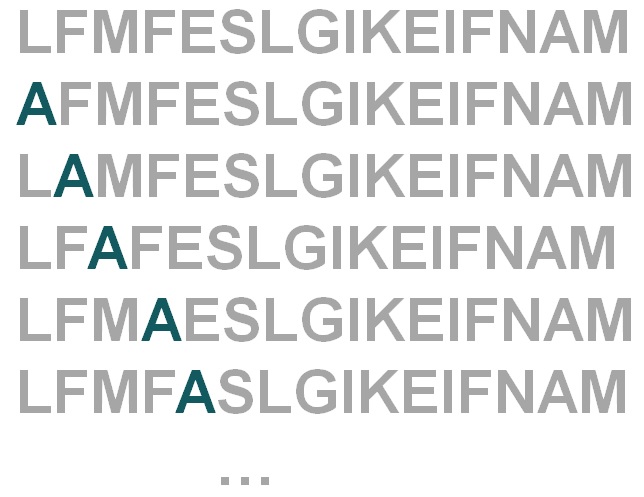
Alanine substitutes for each amino acid in the peptide sequence in order to identify the residues that play a role in the activity, stability, or conformation of the peptide
POSITIONAL SCANNING PEPTIDE LIBRARY
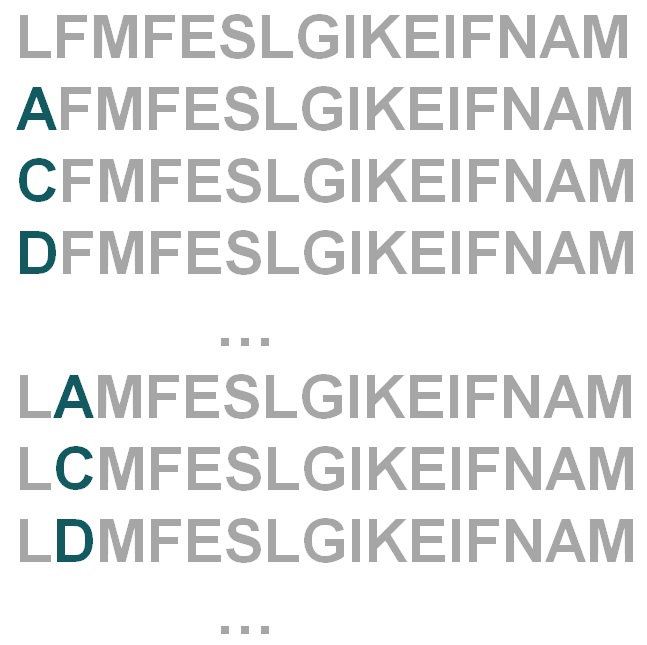
A selected residue is replaced by all other amino acids. Positional peptide library allows to optimize the peptide sequence.
This allows for amino acids that enhance peptide activity to be identified.
SCRAMBLED PEPTIDE LIBRARY
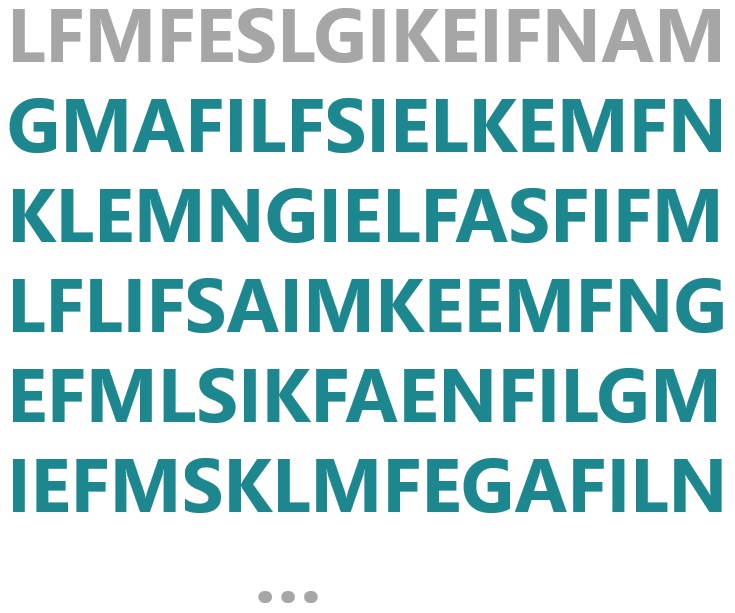
In scrambled peptide libraries, amino acids of a peptide sequence are randomly mixed to screen all possible permutations. It creates an ideal scenario for sequence optimization.
Scrambled peptide libraries are also used as a negative control to determine if the sequence plays a role in the activity of the peptide.
OVERLAPPING PEPTIDE LIBRARY
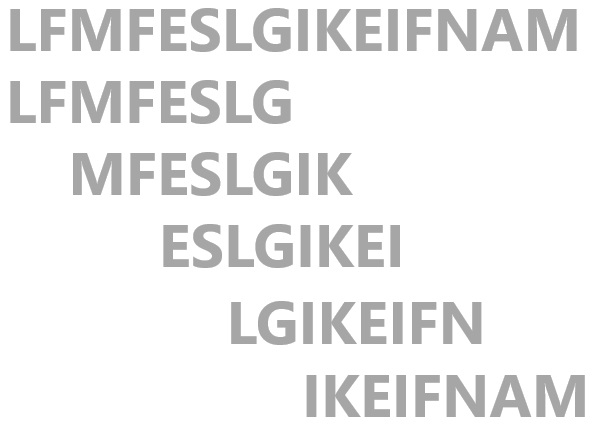
Overlapping peptide libraries are used to figure out which part of a given protein or peptide contains the essential amino acids that contribute to its functionality. The process is defined by two parameters : peptide length and offset number.
It is ideal for T-cell epitope identification.
TRUNCATED PEPTIDE LIBRARY
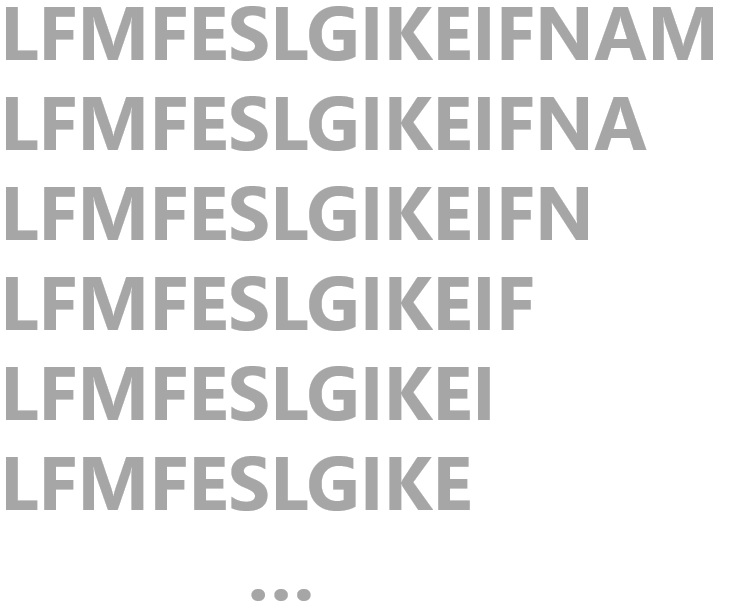
An amino acid is systematically removed from the N-term or C-term sequence. Truncated peptide libraries make it possible to identify the smallest sequence responsible for an activity of the peptide.
Truncated peptide libraries are used to to determine the role of the sequences surrounding key residues (determined by alanine scanning) and to identify peptides with enhanced proteolytic stability
T-CELL TRUNCATED PEPTIDE LIBRARY
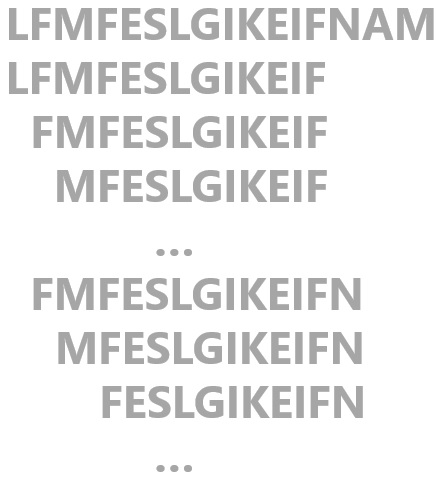
To further identify T-cell epitopes, T-cell truncated peptide libraries use overlapping designs in combination with truncated library designs.
It allow to test all possible T-cell epitopes across a protein of interest in an efficient and rapid manner.
Heavy isotope peptide library synthesis
Peptides are used daily in quantitative proteomics. Thanks to isotopic labeling (12C can be replaced by 13C, 14N by 15N and 1H by 2H), the heavy peptide can be differentiated from other peptides of the same chemical formula by a higher mass.
Traditional peptide libraries are used for screening. Howerver, heavy peptides are used for absolute quantitation with selective reaction monitoring (SRM) or multiple reaction monitoring (MRM)
In this way, sb-PEPTIDE’s heavy isotope peptide libraries can be used as reference chemicals in targeted proteomics assays to measure the expression of selected proteins.
Most common labeling are N-ter or C-ter K(13C 15N) or R(13C 15N). Other positions or amino acids can be considered. Purification options are also available for heavy isotope peptide libraries.
To satisfy your requirements, we can also perform modifications on your heavy peptide library : CysCAM, Met[O], Phosphorylated-Serine-Threonine-Tyrosine, Biotinylation, acetylated Lysine, non natural amino acids, … For more information visit our amino acid chart and reference structure
Related services

